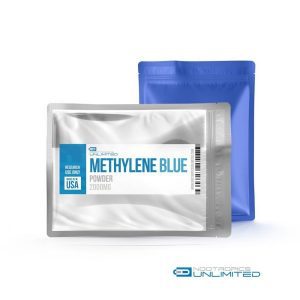Sarmscentral is a leading online retailer specializing in high-quality Selective Androgen Receptor Modulators (SARMs). Our mission is to provide athletes, bodybuilders, and fitness enthusiasts with the best possible products to help them achieve their goals.
METHYLENE BLUE
Nootropics are a brand new type of cognitive enhancing drug, they are not regulated in the US and most are still pending FDA approval. Nootropics also pose no notable side effects (unless stated otherwise) as long as proper dosage instructions are followed.
Overview
The nootropic effects of methylene blue are related to its ability to enhance memory consolidation and improve oxygen consumption in the brain. A study in the late 70’s concluded that methylene blue specifically enhances memory consolidation as opposed to memory retrieval or encoding in an inhibitory avoidance test in rodents. These results were subsequently replicated in 2004 when administration of 1 mg/kg Methylene Blue USP to rats improved memory consolidation in a spatial task for food search. Low-dose Methylene Blue also rescued memory impairment caused by treatment with cytochrome c oxidase inhibitors. Cytochrome c participates in the electron transport chain and is essential to energy generation in neurons. Inhibiting this protein therefore impairs mitochondrial bioenergetics and depletes cellular ATP, resulting in memory impairments. This result is at least suggestive that methylene blue’s nootropic effects involve mitochondrial enhancement. Remarkably, it has also been reported that methylene blue dose-dependently increases oxygen consumption in the brain. The authors also noted that the range of doses which increased cerebral oxygen utilization corresponded to the same dose range that improved memory retention in avoidance and appetitive tasks.

Dosage
Note: dosage information is only for scientific reference purposes. SARMs Central, does not condone the human consumption or use of this substance outside of a controlled scientific environment (i.e. a lab).
Methylene Blue has an excellent safety profile and has been used for decades with few adverse events at much larger doses than 13 mg to treat everything from malaria to cyanide intoxication. Despite this safety record, one should exercise caution because the synthesis of methylene blue involves the use of potentially neurotoxic reagents, including heavy metals like arsenic and organic solvents like dioxane.















